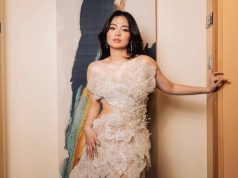Beauty vlogger Anna Cay was named the top digitial influencer in the second half of 2018 by a media intelligence firm.
This was part of Meltwater’s report on the shopping journey of consumers in Southeast Asian countries Singapore, Malaysia, the Philippines and Indonesia.
Cay got a score of 94 out of 100 based on Meltwater’s metrics — popularity, content, social media presence, audience and engagement rates.
Other top local influencers in the list are Raiza Contawi (90), Denise Ochoa (88), Cass Peralta (82) and Jelly Eugenio (80).
The report was based on a content analysis from Twitter, Facebook, YouTube, Instagram, blogs, review sites and online forums from the countries mentioned. This was conducted from July 1, 2018 to December 31, 2018.
It found that social media influencers are now the driving force of the beauty industry as consumers depend on their views more than that from celebrities for their purchasing decisions of beauty products.
In terms of return of investment or ROI, the report found that for every $1.30 spent on beauty influencers, brands received an average return of $11.80.
“Consumers today know when they are being sold to and would much rather hear from real people,” said Mimrah Mahmood, Regional Director, Media Solutions, Meltwater Asia Pacific.
“As such, brands need to be more strategic in their talent collaborations, looking not only at vanity metrics like follower numbers, but also incorporating deeper insights such as average engagement per post, true reach, and demographic data to determine whether an influencer appeals to the right audience,” Mahmood added.
Beauty trends in Southeast Asia
The report revealed five key beauty trends within that period:
1. The top three beauty brands occupy the most of the market share.
These multinational companies are Estee Lauder, Unilever and L’Oreal. They account for 39% of the mass category and 49% of the premium categories in the market.
The brands that are part of these conglomerates sell both skincare (Dove, Ponds, Garnier) and makeup products (Maybelline, Nyx cosmetics, Mac Cosmetics).
“The ranking of the top beauty multinationals changed further with P&G’s sale of its beauty portfolio to Coty, making four of the top five businesses European. The only US brand was represented by beauty and skincare conglomerate Estée Lauder,” it said.
2. Most people talk about lip products
The report found that 49.2% of the social buzz on beauty goes to lips. This was followed by face with 26.3%, eyes with 23.5% and cheek with 1% of voice online.
Estee Lauder’s brands, meanwhile, got talked about the most with 87.5% of the buzz while Shiseido products are the least with only 26% presence.
The report further specified that within 2017 to 2018, most people prefer matte finishes in lipsticks and orange red as the dominant shade.
3. Indonesians talk the most about beauty online
Of the audiences analyzed, Indonesia represented 38% of the people talking about beauty online.
The report cited that the beauty market in Indonesia has grown 10 to 15% annually.
Meanwhile, Indonesia was followed closely by Malaysia with 29% and the Philippines with 27% of the overall beauty chatter.
4. J-Beauty makes a comeback
The J-beauty or Japanese beauty is slowly making a comeback in the beauty scene of the region with 58.7% market preference.
Popular Japanese brands that are slowly replacing the Korean beauty of the last decade are Waso, Shiseido and SK-II.
“Regional residents, especially Indonesians and Filipinos, are travelling to Japan in greater numbers on the back of positive macro-economic trends that are propelling more people into the middle-class bracket,” the report said.
5. Instagram is the channel of choice
Among the social media platforms, Instagram is the most preferred among digital influencers to express themselves, followed by Twitter then YouTube.
In the Philippines, 78.7% of local influencers prefer Instagram and only 19.7% use Twitter. The least is YouTube with only 1.6% of them using it.
“Across Southeast Asia, consumers are expanding their use of social media beyond Facebook by embracing visual ways of expressing themselves,” the report said.










